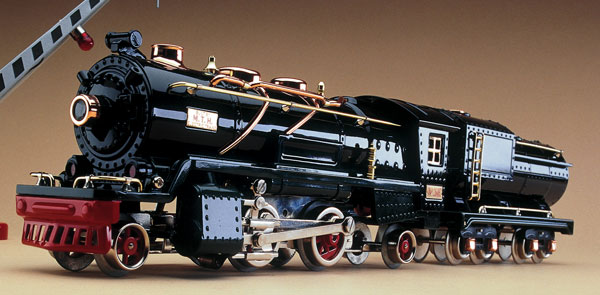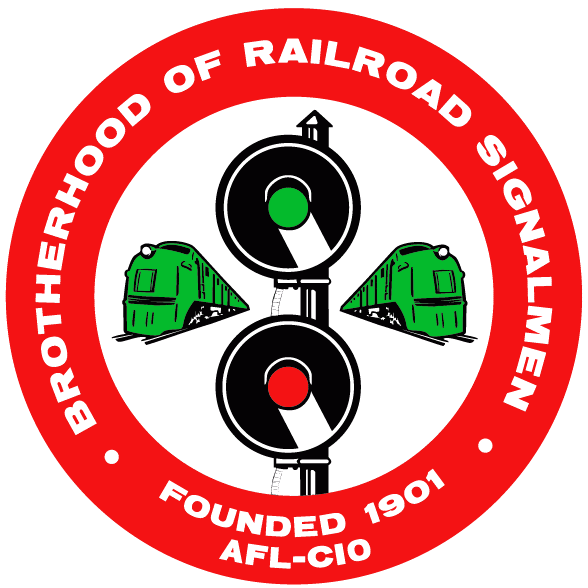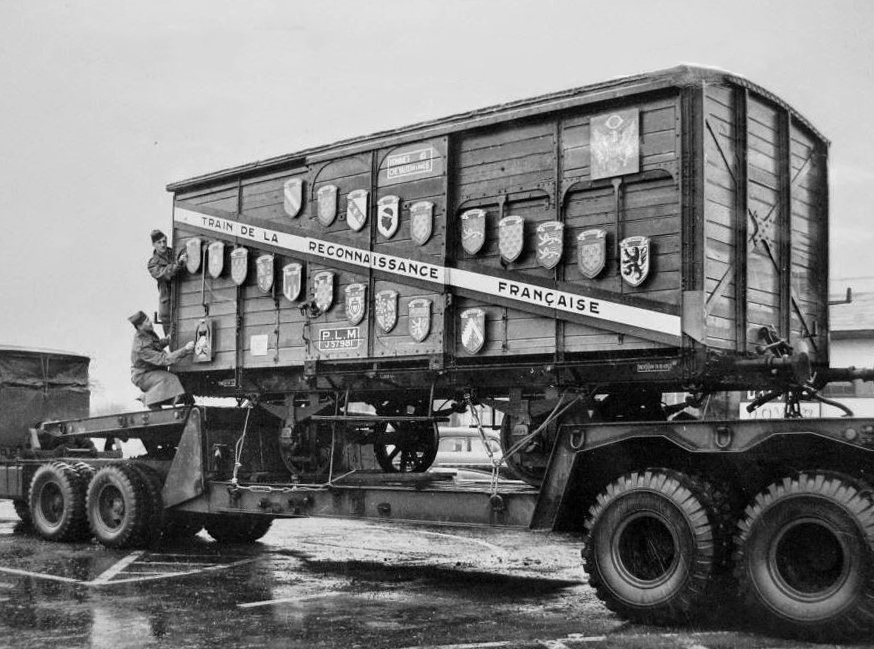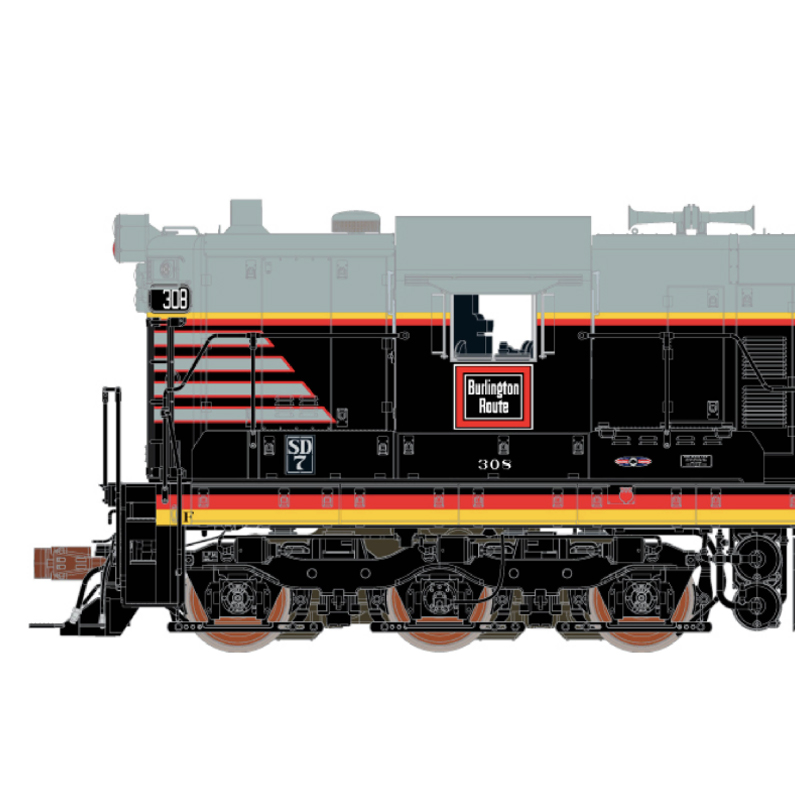Well, I’ll run the risk of stirring up things again by suggesting that the MTH 260E is a great way to move into prewar-style O gauge operation at “bargain basement” prices.
Suffice it to say that this model duplicates no real railroad engine, but replicates one of the gems of the prewar era. The original no. 260E was made by Lionel at the peak of the prewar era, from 1930 to 1935, and MTH surely captures the look and feel of the original.
The engine and tender are 191/2 inches long, and the prewar coupler adds another 1/2 inch. The body is stamped metal and has a brass whistle, compressor, and railings. There is copper trim on the headlight, along with copper domes and piping.
The engine features a red bulb to simulate a firebox glow, which is best observed in dim light.
The glossy enamel paint job is well executed. Next, take a look at the color combination of the 260E. Like the original, the engine has a forest green frame that really complements the black boiler and red cowcatcher. This is actually pretty subtle, but it looks sharp, indeed.
We asked regular CTT contributor John Grams, who is well-versed in prewar Lionel, to offer his assessment of the MTH 260E. Once John got over the contradiction of seeing a Lionel 260E reproduction but hearing a sound system and smelling toy train smoke, he warmed to the locomotive and pronounced it a well-done reproduction.
The combination of a green frame and a high-mounted tender tank was accurate, John said, for early production of the 260E. Later 260Es were offered in different colors.
Once Lionel began putting mechanical air whistles into the tender, the tender’s oil tank was mounted lower, directly on the frame to hide the whistle mechanism.
We tested the contemporary version (no. 10-3001-1) that features a can motor and includes ProtoSound and a smoke unit.
The no. 10-3000-0 version, offering a traditional motor and mechanical air whistle, is also available.
Smoke and sound on our test train were very good – they seemed to have more “punch” since you don’t normally expect to experience such features on a tinplate steam locomotive.
The 260E is recommended for O-54 or wider radius curves. Performance of the 260E was very good, with the MTH ProtoMotor serving up a surprising slow speed average of 14.8 scale mph. In true toy train fashion, the engine racked up an average high speed of 112 scale mph, surely faster than any real 2-4-2 unless, of course, it was flying off a bridge into a gorge or a tabletop onto the floor!
We compared this O gauge engine with the stats for our postwar benchmark, the Berkshire. Before anyone screams that these engines are apples and oranges, we’ll concede that the Berk’s numbers may have been higher, but it wouldn’t look as good on the point of a squad of prewar freight or passenger cars as the 260E.
I thought the drawbar pull was a bit on the light side for an engine of this size. The 5-pound, 13-ounce locomotive measured a drawbar pull of 8 ounces on our force gauge. This is equal to approximately 24 modern, free-rolling pieces of rolling stock on straight and level track. However, the 260E will likely be pulling prewar cars, which have much greater rolling resistance.
We did encounter one bump in the road, literally. The 260E is among the largest of the sheet-metal prewar locomotives, and it has a large tender. The MTH locomotive, just like the original 260E, uses Standard gauge tender wheels, which have deeper flanges than do O gauge wheels.
And just like operators of the original prewar engine, we encountered some bumping, jumping, and tie-hitting with the tender on O-27 and modern, lower-profile track systems, especially when crossing switches.
This baby is more at home on regular Lionel tubular track than on today’s more sophisticated track systems.
All things considered, this is an unusual and fun locomotive. Anyone who is thinking about sticking a toe in the water and buying some prewar rolling stock will do well to consider MTH’s 260E as the power for that vintage gear. As with MTH’s 400E, this is a superbly crafted model of a virtually forgotten style of toy train manufacturing.














